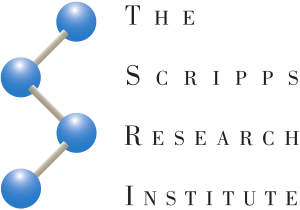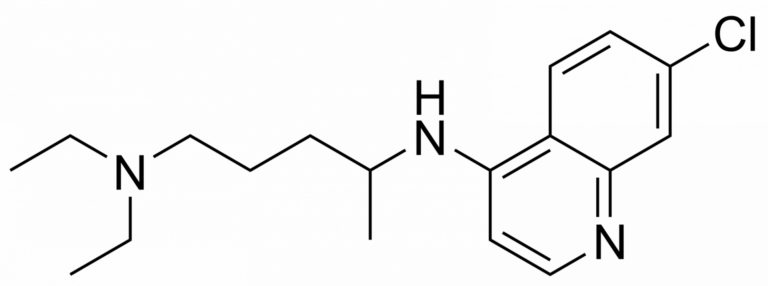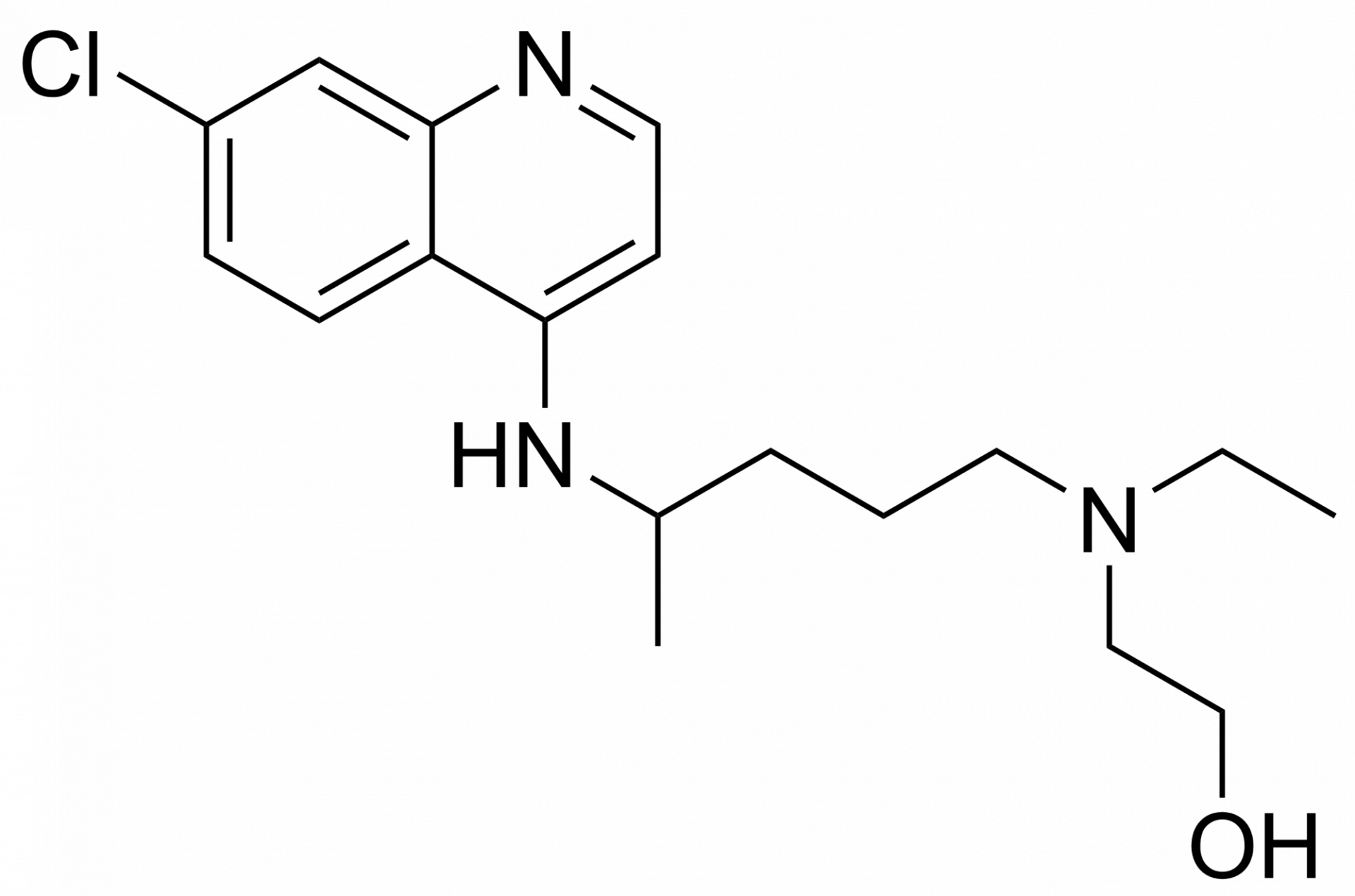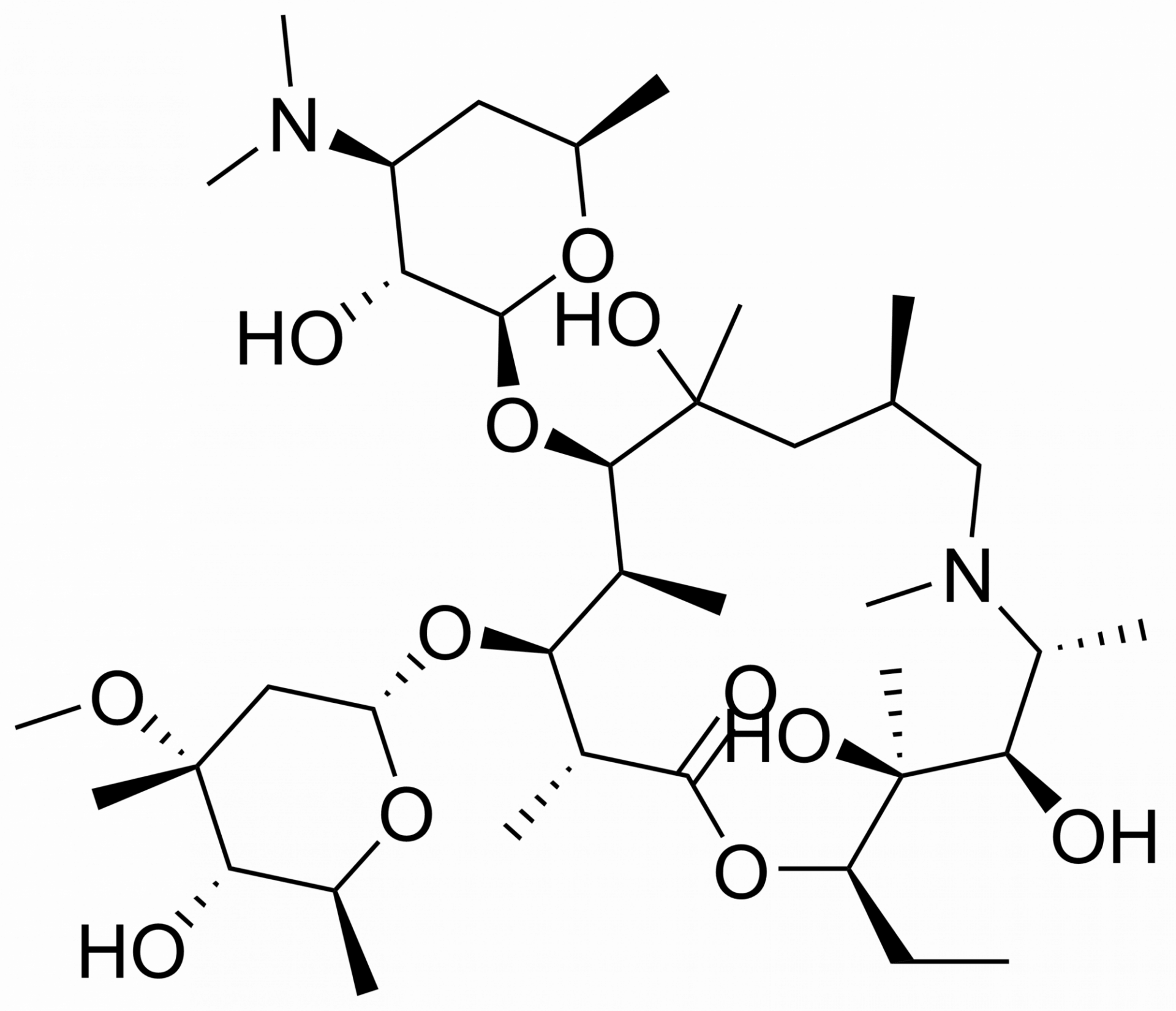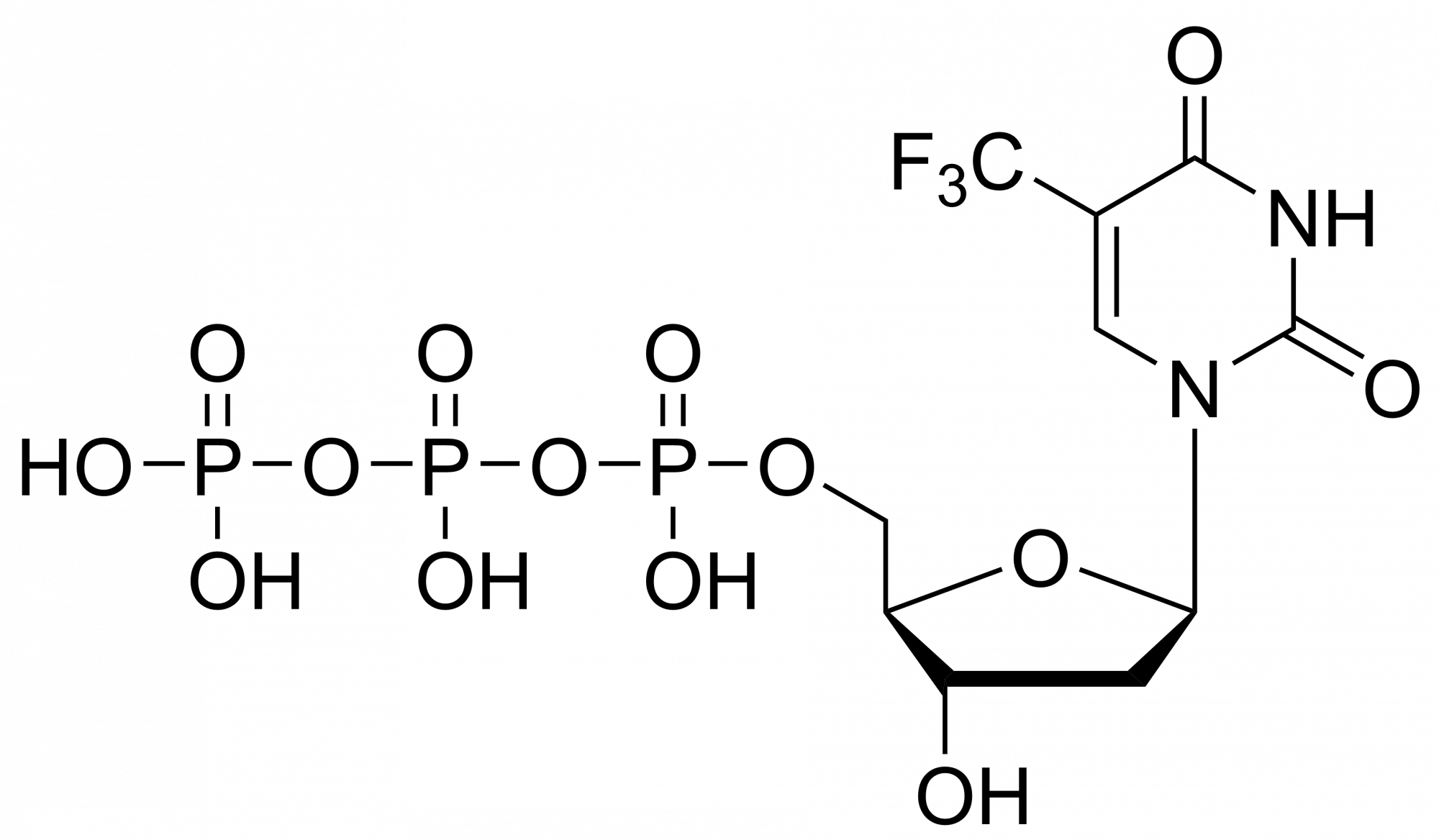Chloroquine – CAS 54-05-7
Chloroquine – CAS 54-05-7 is provided by Sigut Labs (Prague, Czech Republic).
Purity (LC-MS)
99 %
Package contents
Chloroquine sulfate
This compound is for research use only. We do not sell to patients.
| 100 mg | € 100 | Stock | ||
| 1 g | € 150 | Stock | ||
| Do you want custom amount? | Custom amount | |||
Stock
Stock
Characterisation
Description
Chloroquine is a medication which is used to prevent and treat malaria in areas where malaria remains sensitive to its effects. Certain types of malaria, resistant strains, and complicated cases typically require different or additional medication. It is also occasionally used for amebiasis that is occurring outside the intestines, rheumatoid arthritis, and lupus erythematosus. Chloroquine is also being studied for the treatment of COVID-19.
Chloroquine is a member of the drug class 4-aminoquinoline and it was discovered in 1934, by chemist Hans Andersag and coworkers at the Bayer laboratories, who named it Resochin. Chloroquine has also significant antiviral effects. It increases late endosomal and lysosomal pH, resulting in the impaired release of the virus from the endosome or lysosome – the release of the virus requires a low pH. The virus is therefore unable to replicate (releasing its genetic material into the cell).
Chemicals are distributed worldwide
Buy Chloroquine now, get your order in 48 hours.
- Shipping through DHL in 48 hours
- All compounds are safely and rigorously packed
Payment
- We are sending the invoice the same day as the shipment
- We are able to modify the invoice for the academic institution, so the order can be paid from grants
References
- Wang, M.; Cao, R.; Zhang, L.; Yang, X.; Liu, J.; Xu, M.; Shi, Z.; Hu, Z.; Zhong, W.; Xiao, G., Remdesivir and chloroquine effectively inhibit the recently emerged novel coronavirus (2019-nCoV) in vitro. Cell Research 2020, 30 (3), 269-271.
- Hu, T. Y.; Frieman, M.; Wolfram, J., Insights from nanomedicine into chloroquine efficacy against COVID-19. Nature Nanotechnology 2020, 1-3.
- Gao, J.; Tian, Z.; Yang, X., Breakthrough: Chloroquine phosphate has shown apparent efficacy in treatment of COVID-19 associated pneumonia in clinical studies. Bioscience trends 2020.
- Dong, L.; Hu, S.; Gao, J., Discovering drugs to treat coronavirus disease 2019 (COVID-19). Drug Discoveries & Therapeutics 2020, 14 (1), 58-60.
- Cortegiani, A.; Ingoglia, G.; Ippolito, M.; Giarratano, A.; Einav, S., A systematic review on the efficacy and safety of chloroquine for the treatment of COVID-19. Journal of Critical Care 2020.
- Colson, P.; Rolain, J.-M.; Lagier, J.-C.; Brouqui, P.; Raoult, D., Chloroquine and hydroxychloroquine as available weapons to fight COVID-19. Int J Antimicrob Agents 2020, 105932.
- Mauthe, M.; Orhon, I.; Rocchi, C.; Zhou, X.; Luhr, M.; Hijlkema, K.-J.; Coppes, R. P.; Engedal, N.; Mari, M.; Reggiori, F., Chloroquine inhibits autophagic flux by decreasing autophagosome-lysosome fusion. Autophagy 2018, 14 (8), 1435-1455.
- Marmor, M. F.; Kellner, U.; Lai, T. Y.; Melles, R. B.; Mieler, W. F., Recommendations on screening for chloroquine and hydroxychloroquine retinopathy (2016 revision). Ophthalmology 2016, 123 (6), 1386-1394.
- Eng, C. H.; Wang, Z.; Tkach, D.; Toral-Barza, L.; Ugwonali, S.; Liu, S.; Fitzgerald, S. L.; George, E.; Frias, E.; Cochran, N., Macroautophagy is dispensable for growth of KRAS mutant tumors and chloroquine efficacy. Proceedings of the National Academy of Sciences 2016, 113 (1), 182-187.
- Delvecchio, R.; Higa, L. M.; Pezzuto, P.; Valadão, A. L.; Garcez, P. P.; Monteiro, F. L.; Loiola, E. C.; Dias, A. A.; Silva, F. J.; Aliota, M. T., Chloroquine, an endocytosis blocking agent, inhibits Zika virus infection in different cell models. Viruses 2016, 8 (12), 322.
- Marmor, M. F.; Kellner, U.; Lai, T. Y.; Lyons, J. S.; Mieler, W. F., Revised recommendations on screening for chloroquine and hydroxychloroquine retinopathy. Ophthalmology 2011, 118 (2), 415-422.
- Martin, R. E.; Marchetti, R. V.; Cowan, A. I.; Howitt, S. M.; Bröer, S.; Kirk, K., Chloroquine transport via the malaria parasite’s chloroquine resistance transporter. Science 2009, 325 (5948), 1680-1682.
- Wellems, T. E.; Plowe, C. V., Chloroquine-resistant malaria. The Journal of infectious diseases 2001, 184 (6), 770-776.
- Djimdé, A.; Doumbo, O. K.; Cortese, J. F.; Kayentao, K.; Doumbo, S.; Diourté, Y.; Coulibaly, D.; Dicko, A.; Su, X.-z.; Nomura, T., A molecular marker for chloroquine-resistant falciparum malaria. New England journal of medicine 2001, 344 (4), 257-263.
- Martin, S. K.; Oduola, A. M.; Milhous, W. K., Reversal of chloroquine resistance in Plasmodium falciparum by verapamil. Science 1987, 235 (4791), 899-901.
- Krogstad, D. J.; Gluzman, I. Y.; Kyle, D. E.; Oduola, A.; Martin, S. K.; Milhous, W. K.; Schlesinger, P. H., Efflux of chloroquine from Plasmodium falciparum: mechanism of chloroquine resistance. Science 1987, 238 (4831), 1283-1285.
- Gonasun, L. M.; Potts, A. M., In vitro inhibition of protein synthesis in the retinal pigment epithelium by chloroquine. Investigative Ophthalmology & Visual Science 1974, 13 (2), 107-115.
Similar products
Didn't find the chemical you were looking for?
Contact us
WHY CHOOSE
SigutLabs
Your impossible is our starting line
Partners & distributors
